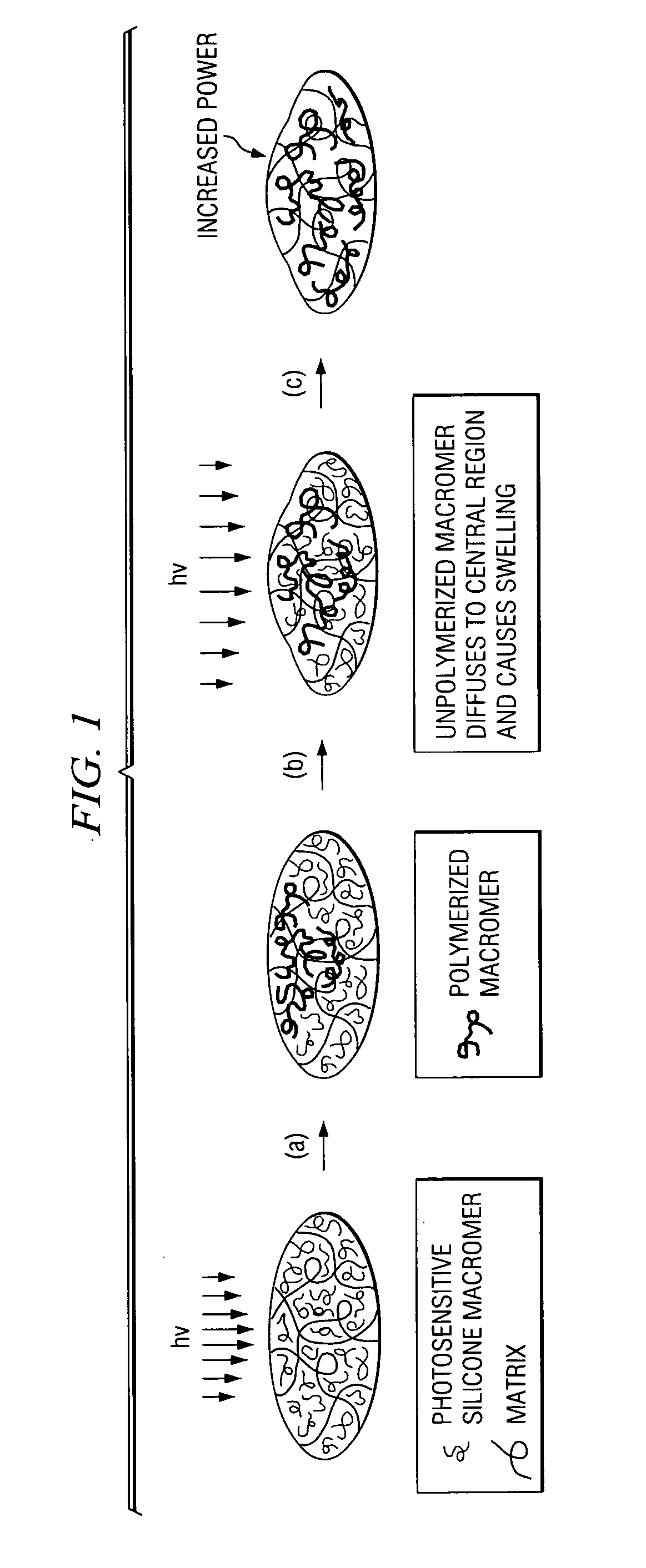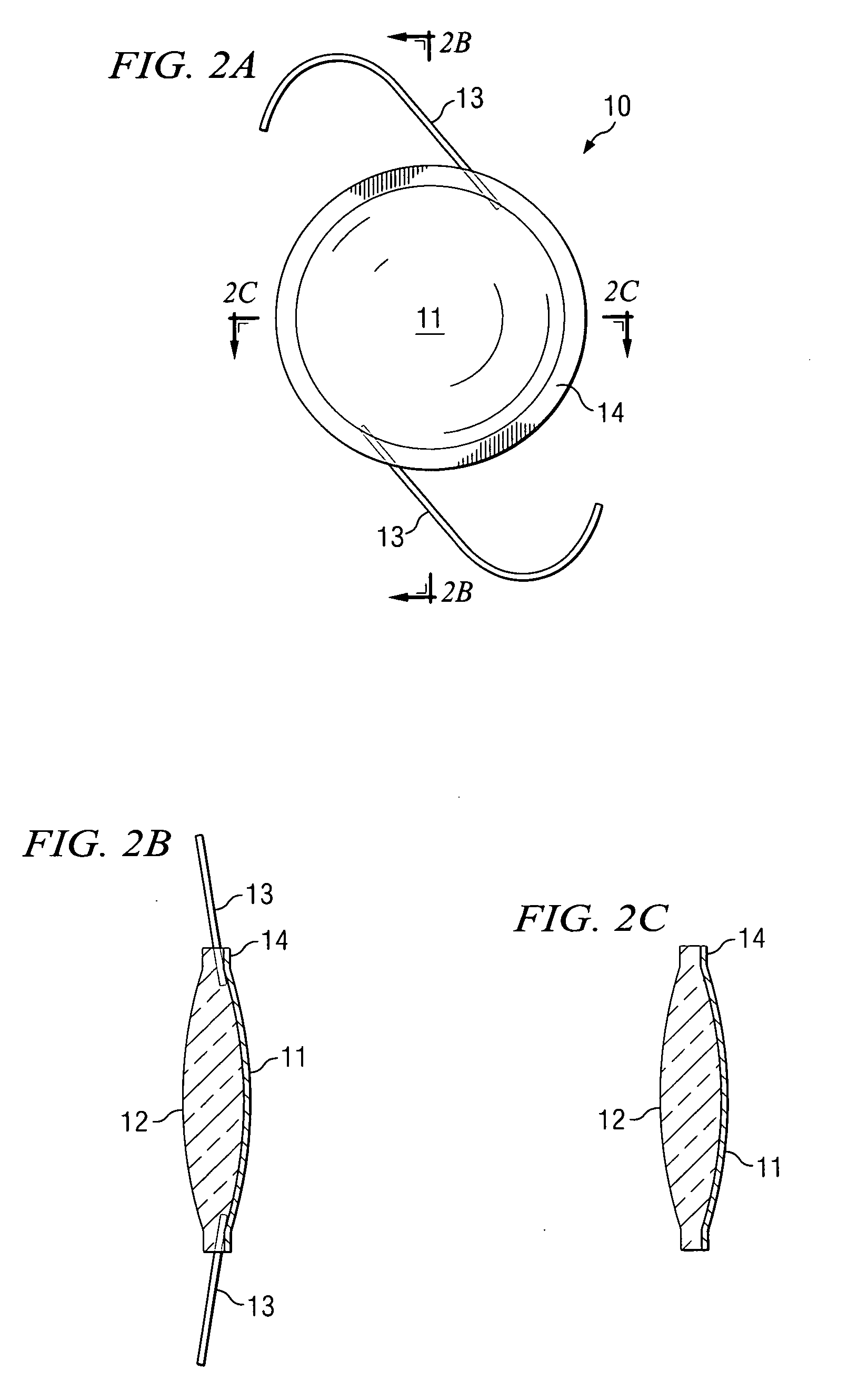Method for improved retinal safety using the light adjustable lens (LAL)
- Summary
- Abstract
- Description
- Claims
- Application Information
AI Technical Summary
Benefits of technology
Problems solved by technology
Method used
Image
Examples
Embodiment Construction
[0023]A light adjustable lens (LAL) comprises four distinct chemical entities or components. The first component is the matrix polymer that gives the lens its basic shape, refractive index, and material properties. The second component is known as the macromer and is, by design, chemically similar to the matrix polymer. One difference between the two is the presence of photopolymerizable end groups on the macromer such that the application of the appropriate frequency of light will cause the macromer molecules to form chemical bonds between each other. The third component is the photoinitiator that absorbs the applied incoming light (365 nm) and initiates polymerization of the macromer. The fourth component of the LAL is a UV absorbing molecule that protects that retina from ambient UV irradiation.
[0024]The mechanism upon which the LAL technology is based is depicted graphically in FIG. 1. Application of light to-the LAL will cause the photopolymerized macromers in the irradiated re...
PUM
 Login to View More
Login to View More Abstract
Description
Claims
Application Information
 Login to View More
Login to View More - R&D
- Intellectual Property
- Life Sciences
- Materials
- Tech Scout
- Unparalleled Data Quality
- Higher Quality Content
- 60% Fewer Hallucinations
Browse by: Latest US Patents, China's latest patents, Technical Efficacy Thesaurus, Application Domain, Technology Topic, Popular Technical Reports.
© 2025 PatSnap. All rights reserved.Legal|Privacy policy|Modern Slavery Act Transparency Statement|Sitemap|About US| Contact US: help@patsnap.com



